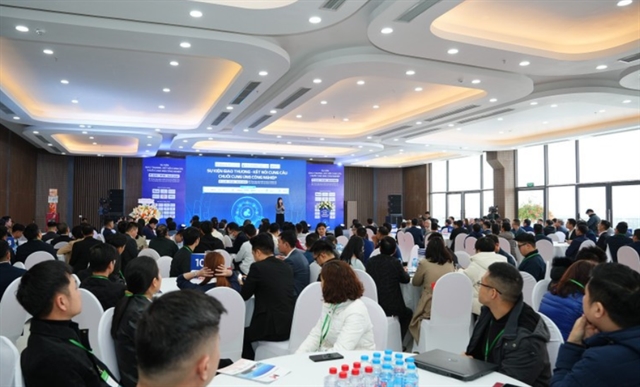 Opinion
Opinion

Đỗ Đức Thắng, deputy director of the Northern Delta Regional Hydro-Meteorological Centre, talks to Tài Nguyên Môi Trường (Natural Resources and Environment) online newspaper about the improvement of the hydro-meteorological monitoring system in Hà Nội

|
| Đỗ Đức Thắng, deputy director of the Northern Delta Regional Hydro-Meteorological Centre |
Đỗ Đức Thắng, deputy director of the Northern Delta Regional Hydro-Meteorological Centre, talks to Tài Nguyên Môi Trường (Natural Resources and Environment) online newspaper about the improvement of the hydro-meteorological monitoring system in Hà Nội
How does the hydro-meteorological monitoring system work?
The system of hydro-meteorological monitoring in Hà Nội consists of five hydrographic stations, four meteorological stations, one environmental station and 17 public automatic rain gauge stations. Additionally, there are private 25 automatic rain gauge stations in the city.
The four meteorological stations collect data on wind, rain, temperature, humidity while the five hydrographic stations use ultrasonic technology and automatically measure the water level on the Kim Ngưu River to serve flood warnings for the city.
The hydrological stations have been arranged logically to observe hydrological factors on the Đà, Hồng, Đuống and Đáy rivers. Some stations have been used to observe hydrological factors for more than 100 years, including Hà Nội Hydrographic Station and Sơn Tây Hydrographic Station.
The hydrological, meteorological and environmental stations have met the demand for the daily weather forecast as well as the city’s natural disaster prevention and control. The data has been continuously updated, assisting the national hydro-meteorological monitoring system in updating information related to natural disasters to issue the earliest warnings. It also helps managerial agencies give prompt responses to natural disasters and dangerous weather phenomena.
Of the four meteorological stations, notably, Hà Đông Meteorological Station is one of the stations sharing data with neighbouring countries’ meteorological stations.
The city’s hydro-meteorological sector has fully equipped devices for the stations over the years. Under the Government’s plans, the hydro-meteorological monitoring system will receive more investment in the future.
How is co-operation for developing the city’s hydro-meteorological monitoring system implemented?
It is necessary to mobilise the participation of the private sector to invest and upgrade the hydro-meteorological monitoring system in the city.
Hà Nội is the centre of cultural, economic and political of the country, therefore, providing a hydro-meteorological forecast for the city is one of the most important tasks of the Northern Delta Regional Hydro-Meteorological Centre.
The centre has worked with the city’s Steering Committee on Natural Disaster Prevention and Control to exchange data and together build automatic hydro-meteorological stations. The centre also uses its staff with professional skills in the hydro-meteorological field to consult on issues related to hydro-meteorology for the committee.
The centre has worked with Hà Nội Sewerage And Drainage Company Limited to exchange data of rain and water level in the city to serve forecasting activities, including urban flood warnings. Following the co-operation, the centre has taken data of rain and water level from 44 automatic hydrographic and rain gauge stations invested in by the company.
The centre has been working with the Water Resources Development and Consulting Company (WATEC) to hire automatic rain gauge stations of other related agencies or companies in the city to serve rain and flood warnings.
What plan does the centre have for the future?
One of the major tasks of the centre is ensuring the stable operation of the hydro-meteorological monitoring system. Therefore, the centre has always focused on investing and upgrading facilities for the system, including the application of digital technologies on the foundation of Industry 4.0.
The centre plans to constantly upgrade the facilities to ensure a stable and smooth operation. Forecasts and early warnings of natural disasters and dangerous weather phenomena will be continued to be issued promptly. — VNS


.jpg)

